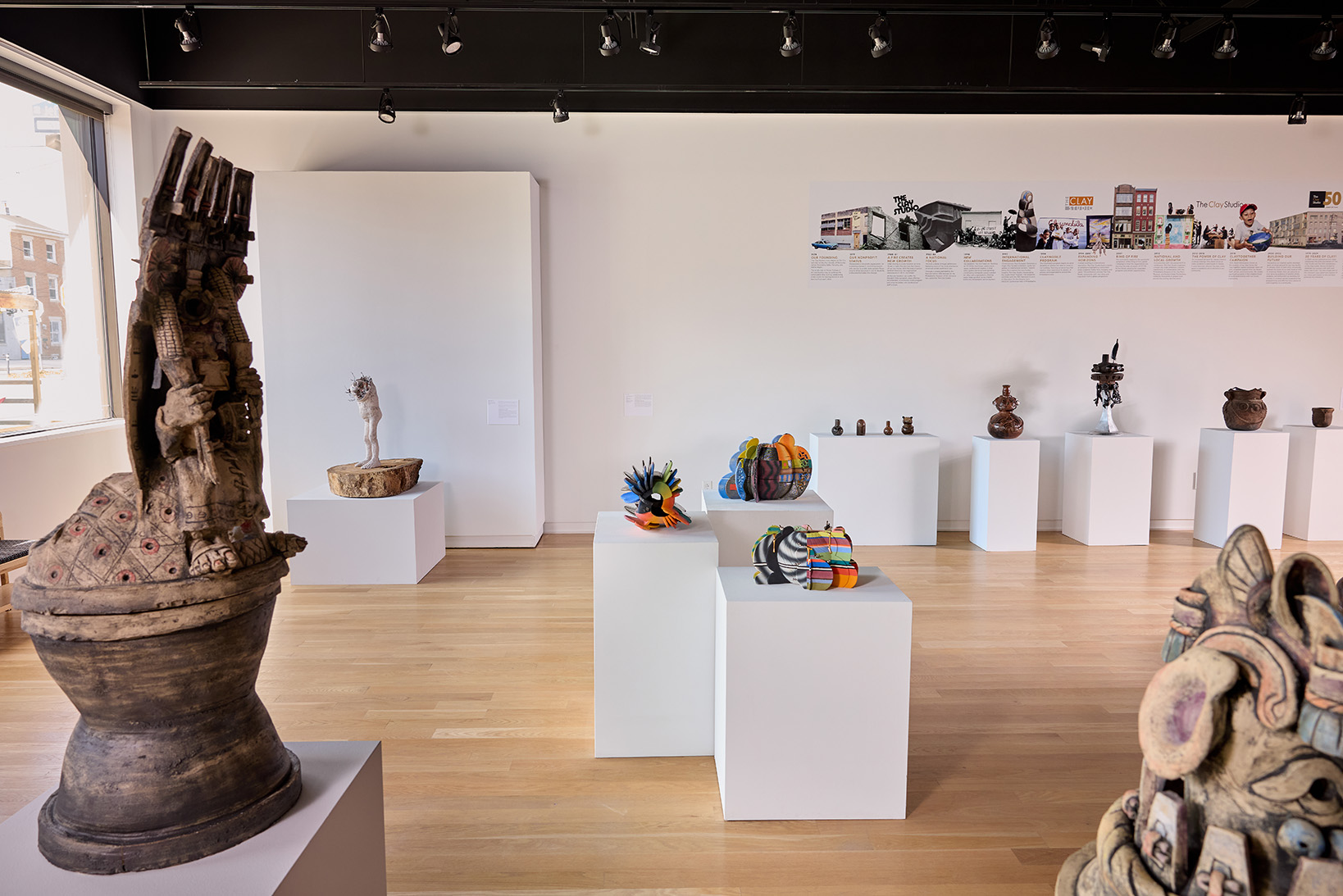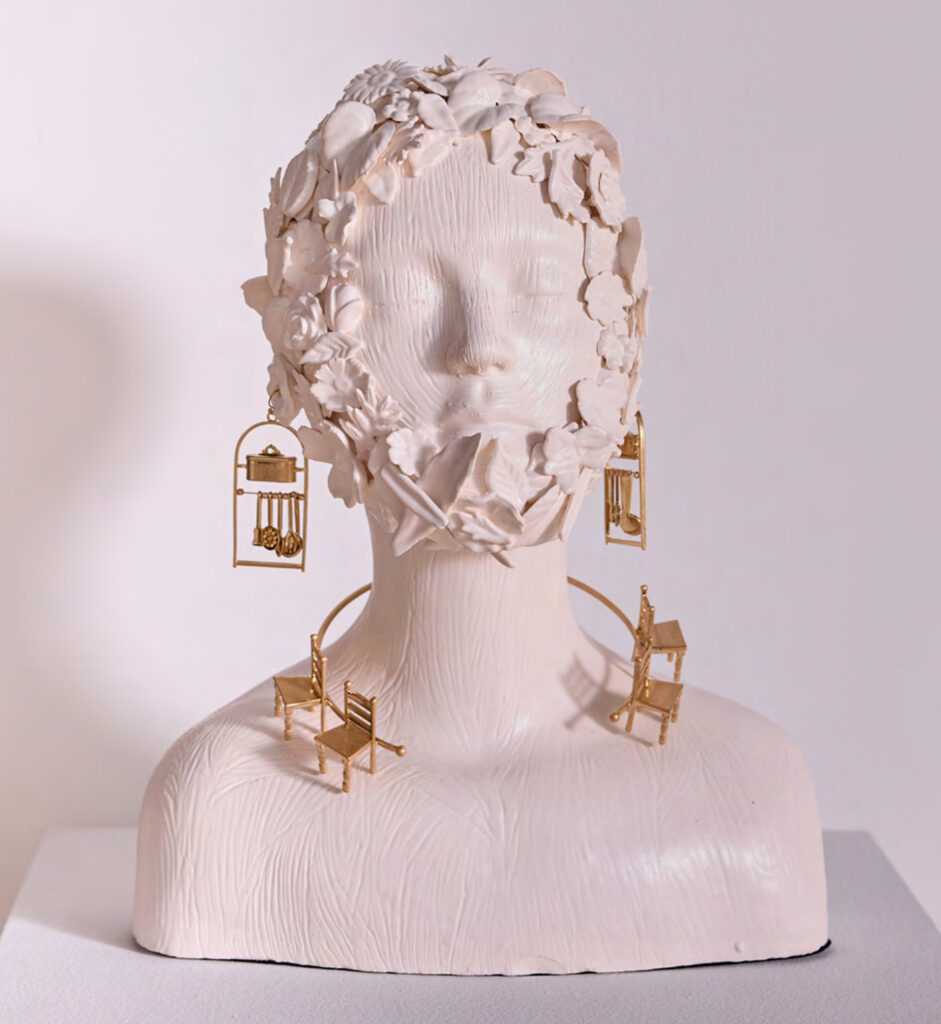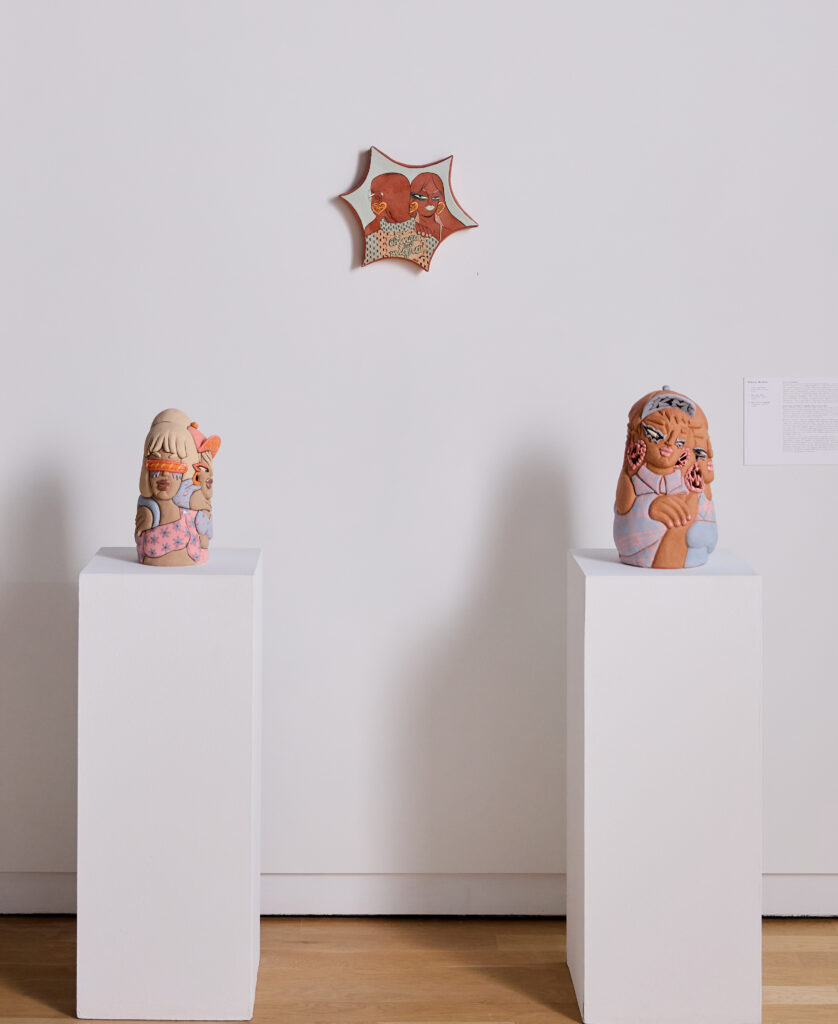

What does the future hold? Speculative discourse and contemplations swirling with doubts, hope, and hysteria have preoccupied human consciousness for centuries—often to no avail. Sailing the turbulent waves of the past few treacherous years—marked by proliferating disease, climate crises, political unrest, and the rapid ascension of artificial intelligence—has only exacerbated our anthropocentric angst. Are we facing the extinction of our species? Are we to wrestle in the ring of obsolescence or form allegiances against the forthcoming chaos?
The Clay Studio determines the latter. In fact, since its establishment in 1974, the ethos of learning, supporting, and sharing resources has been instrumental in transforming the organization into a vital community center—engaging and uplifting neighbors in Philadelphia and internationally. Through various initiatives, The Clay Studio offers free weekly workshops, reaches nearly 6,000 students and adults through the Clay Mobile Program, hosts 1,000 attendees at clay festivals, and sponsors artist residencies.


This year, they celebrate their 50th anniversary, honoring their past while pondering the future. What is the future of the Clay Studio? And by extension—the overarching, inescapable query—what is the Future of Clay?
Jennifer Zwilling, Curator and Director of Artistic Programs, and three co-curators—Anya Montiel, Angelik Vizcarrondo-Laboy, and Zindzi Harley—each selected and collaborated with two artists to present their auguries and aspirations for what the future holds for ceramics. Through the lens of eight artists, an optimistic embrace of community, multiplicity, humanity, transnationalism, diversity, and innovation is on display at the Clay Studio until December 31st.
Upon entering the gallery, confrontational, warrior-like figures garbed in ornate headdresses and jewelry are affixed to a form resembling a double-headed drum. Though they appear domineering, the Hijos de la Tiznada are silenced, muzzled with masks as they stand guard, protecting the space—a poignant reminder of colonialism and gentrification, persistent forces under current imperial and corporate regimes that continue to devastate the disenfranchised.
Cesar Viveros, a muralist, sculptor, community activist, and member of Clay Studio’s Council, honors his ancestral roots while reflecting on childhood memories of playing with wild clay sourced from his grandparents’ land in Mexico. His earthenware figures—faintly glazed and burnished against the rough, scarred surfaces—embody age, endurance, and perseverance. By preserving and commemorating his past, he extends spiritual courage to the community and passes down his traditions and creative ambitions to his son.



The analogous theme of ancestral homage continues with the totemic figurines of Anne Adams, an artist from the Southern Kaduna State of Nigeria and a current Philadelphia resident. Lining a mud-brown wall, the Congregation of Elders animatedly sing, whistle, or mourn, serving as a projection soundboard of imagined voices.
Constructed in a style reminiscent of Nok Terracottas (500 BC–200 BCE), Adams coil-builds the votives, sculpts them subtractively, and adorns them with idiosyncrasies—headpieces, attire, and gestures. Some are carved with symbols and appear to sway, while others are glazed and remain statically austere. All together, they synchronize in a harmonious hymn that invites viewers to meditate on their collective and individual pasts and futures.

Assiduously flourishing in society, technical innovations are an indisputable facet of the future, inevitably permeating and activating the clay field. In Jolie Ngo’s case, 3D printing serves as a tool for producing her kaleidoscopic and intangible Lantern and Shadow Vessel series. Influenced by Vietnamese lanterns, an emblem of her cultural heritage, the fluorescent, multilayered forms are airbrushed and painted into a psychedelic potpourri of patterns—one sculpture, in particular, gilded with silver droplets and oozing gold.
The native Philadelphian is attuned to the oscillating tensions between craftsmanship and automation, recognizing the contemporary unease felt by artists and the broader populace, many of whom grapple with existential anguish. She maintains, however, a hopeful and grounded perspective, memorializing the past while fusing futuristic aesthetics and methods—a model and luminous fortune of human centrism coexisting symbiotically with technological advancements.
Also drawing from her heritage, Michelle Im’s figurative ceramics blend rich Korean imagery with a Western twist, exploring the disorienting complexities of her immigrant identity. Despite the weighted theme, Im approaches her work with humor, evident in her cheeky titles. For instance, her large-scale Korean Air flight attendant—a semblance of perfection and a symbol of transitions—is titled Beef or Chicken.
Im revisits the flight attendant motif on a moon jar—a historical vessel from the Joseon Dynasty (1392 to 1910). Traditionally made by throwing and joining two hollow hemispheres, she modifies the jar by slicing it vertically and further obscures its form with an illustrative scene. One half depicts a landscape with a moon and waves, while the other shows an attendant serving nuts, aptly titled Nut Gate.

Another cultural reference is the lotus flower, painted on both the moon jar and the Enlightenment Cookie. Central to Buddhist symbolism, the lotus signifies layered meanings: a closed bud represents potential, while a blooming flower signifies full enlightenment. For Im, these works may encapsulate the possibilities of globalization: unfolding potential, blending traditions, and the blossoming of a vibrant, multicultural, and multiracial society.


With rising sea levels, pollution, deforestation, and global warming, an exhibition about the future sans addressing the environmental crises would be akin to the negligence of current political powers. The Blueprint (Indigo Wing & A Poem Full of Corpses) captures the terror of climate change, depicting humans fossilized mid-motion—arms and legs outstretched in a final, desperate wail for help. Morel Doucet’s supernatural blue porcelains are chilling, with limbs reduced to mere accessories, twigs for nesting birds—a karmic outcome of humanity's greed and complicity in terrorizing nature.
Doucet also examines the African diaspora through porcelain busts like Black Maiden in a Crown of Flora, with tree-textured skin, a floral headpiece, and gold domestic accessories, and Ebony in a Veil of Foliage #3. As a Haitian immigrant in Miami, he reflects on the convergence of environmental degradation, economic disparity, and racial injustice—forces displacing African descendants from their motherland. In a plea for change, he trumpets an urgent alarm—a warning of the dire consequences of inaction.



Nature is also reflected in a solitary, stylized figure standing atop a tree stump, its upper half seemingly exploded and replaced by a glass orb. Weathered by time, the lone figure cradles clay debris and twigs, becoming a nesting place for a bird perched and gazing out of the gallery window. For Holly Wilson, her figures transcend humanity; they are interpretations of spirits—energies from what once existed or entities from another dimension.
As a descendant of the Delaware Tribe of Indians, Holly Wilson reflects on her ancestral lineage, the sufferings of forced deracination, generational trauma, and the enduring spiritual energy that resonates within spaces. Yet, she conveys hope through her piece Within We Are the Light—a conduit for storytelling, ensuring these narratives are never lost.

Parallel themes of Indigenous tributes resonate in the ceramics of Chase Kahwinhut Earles, who honors his Caddo lineage, tied to lands now known as Texas, Louisiana, Arkansas, and Oklahoma. When Earles discovered the Caddo Nation had a pottery tradition, he immersed himself into research and began employing techniques his ancestors had practiced for thousands of years. Sourcing wild clay from the banks of the White, Washita, and Red Rivers, he sculpts then pit-fires his forms to achieve rich shades of scorched earthy browns and creamy gradients.
He also engraves his vessels and, for some, smooths, burnishes, and polishes the surface to a gleaming radiance, as seen in Hasinai.
Not only motivated to revive and share his ancestral pottery traditions, he’s also influenced by Indigenous Futurism. In his piece Scout, he reimagines a UFO, pinned with a feather and grounded by a grey base that evokes the archetypal beaming vacuum light, while also referencing the U.S. Army’s historical use of Indigenous scouts to track presumed adversarial tribes.



Also considering space, Kirsty Moreno’s retro-futuristic, funky graphic sculptures respond to the resurgence of space travel, which billionaires have turned into a Napoleonic-style race to the stratosphere and beyond. By absolving themselves of responsibility for the Earth they're actively destroying, they propagate a fantasy wrapped in colonial rhetoric—evading accountability and disempowering people. Moreno acknowledges this reality but shifts her focus toward the strength of community, emphasizing its necessity in challenging and countering narcissistic pursuits.

Her rotund, billowing forms feature scrumptious patterns and a saccharine color palette, creating an optical banquet—a hyper-stylized vision of the future infused with nostalgic 1990s girl-power aesthetics. Femme figures morph into unified assemblages, merging space gear with Chicana garments and accessories to honor her SoCal Latinx heritage, presenting an alternative built on solidarity and reimagined society.
"[…] my ceramic characters band together in the face of oppression, chaos, and harm as they echo the ethos of self-sufficiency and empower one another with an eye toward speculative futures."
- Kirsty Moreno
Predominantly featuring figurative works, The Future of Clay highlights the human yearning to find reflection in art—its tangibility offering grounding amidst the uncertainties of the future. A throughline across all the works embraces community while honoring the past—threads that tie back to ancestral clay traditions, passed down through generations to serve and strengthen communities—a testament to the enduring clay continuum.

Visit The Clay Studio at 1425 N American Street, Philadelphia, PA 19122. Learn more about the Future of Clay on their website.
